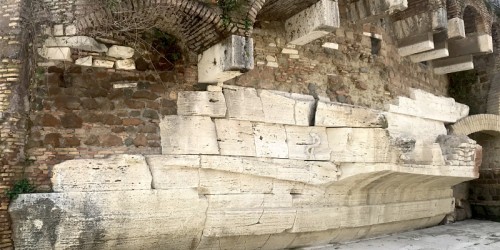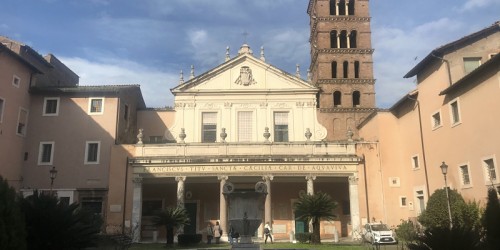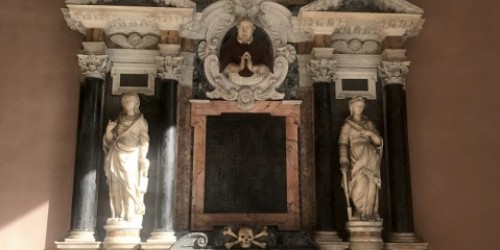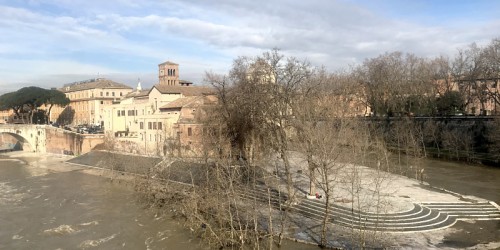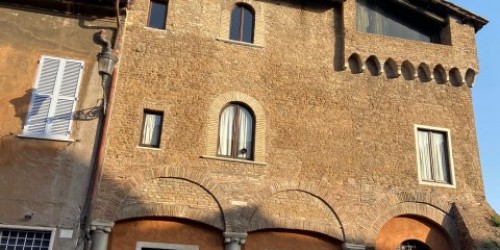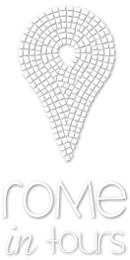
 Rome in Tours
Rome in Tours

Tours
Churches of Rome
The River Tiber and its island, the Basilica (and undergrounds) of Santa Cecilia in Trastevere
The biggest river in central Italy, the smallest inhabited island in the world and a Christian church built over a preexisting pagan house
- Avoid the crowd
- Duration
- 3h
- Meeting Point
- View on Google Maps
- Meeting Point
- Ponte Fabricio
- Meeting Time
- 10 am
- Included
- Entrance fees to the undergrounds of the Basilica
- Sites Visited
Ponte Fabricio, Torre della Pulzella, Isola Tiberina (stroll around), Ponte Rotto (broken bridge) (take photos), Piazza di San Bartolomeo, Basilica of San Bartolomeo all'Isola (going inside), Ponte Cestio, Piazza in Piscinula, Casa dei Mattei (stop outside), Church of San Benedetto in Piscinula (stop outside), Palazzetto Nunez Leslie (stop outside), Vicolo dell'Atleta and the most ancient roman synagogue (stop outside), Piazza di Santa Cecilia, Casa di Ettore Fieramosca (stop outside), Basilica di Santa Cecilia, porch, court, interior, crypt, undergrounds and relics (going inside), Statue of the Saint by Stefano Maderno, Mosaic apse with theophany scene, Canopy by Arnolfo di Cambio
What to expect
Quite a strange feeling to be a daily distracted observer of an eternally streaming river, silent witness of all the events bringing Rome to its unrivaled destiny.
This is the way I feel every time I approach the river and its island. A strip of land playing a key role in the development of the first settlement by the romans, trait d'union of the two banks and commercial route between the Etruscan and the Greeks.
The Isola Tiberina is connected to the mainland through two bridges, one of which leading to the most peculiar neighborhood of Rome, Trastevere. A district showing more than any other the cosmopolitan nature of the eternal city and testifying several examples of violence over foreign communities victims of religious persecutions.
Among them, the story of santa Cecilia martyr and patron saint of the musicians, proof of the strength of spirit bringing to the ultimate sacrifice.
